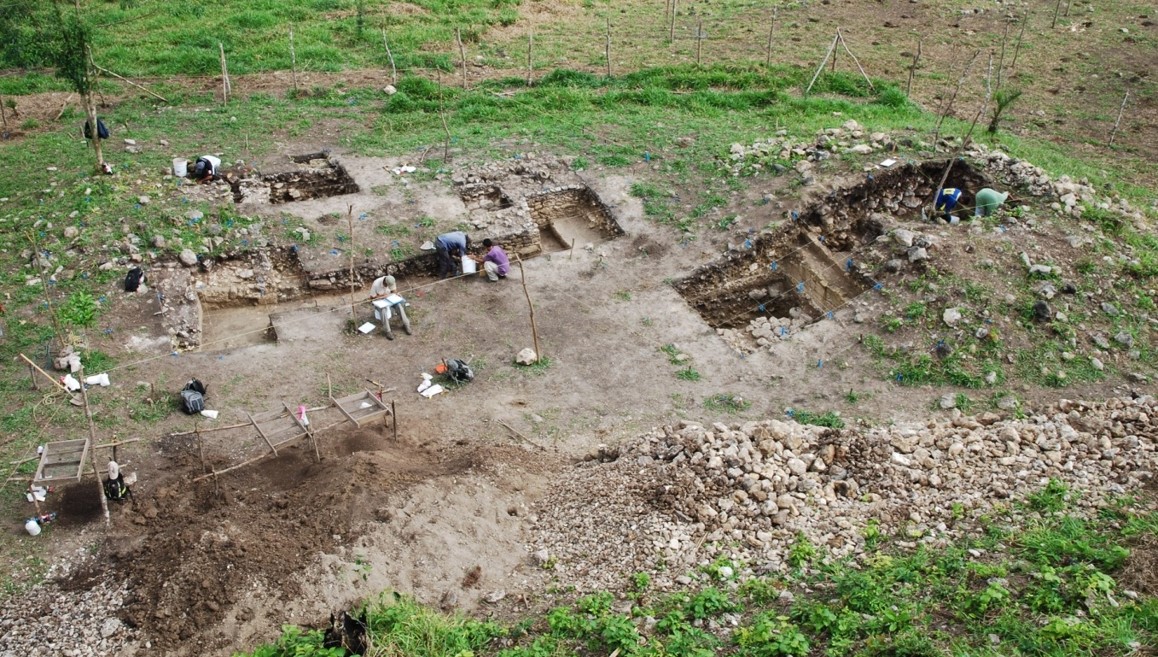Now seen as ruined, forest-covered pyramids and devoid of residents, ancient Maya cities are easy to see as exotic, mysterious, empty places. However, archaeology has shown that Maya cities were densely populated metropolises inhabited by kings, courtiers, craftspeople, merchants, and farmers. Through maps and architectural reconstructions, archaeologists can imagine Maya cities as lived in places by looking at how people moved around and where people may have gathered for celebrations, markets, and socialization. Yet, these visions are two-dimensional and see the Maya city as either ruined, as in the present, or vibrant. In truth, Maya cities were occupied for long periods of time, often millennia. Like all long-lived cities, the layouts we see today are not the product of a single coherent plan, but rather iterative decision-making. Residents lived in a historic center in which monuments, houses, and public spaces were built, occupied, renovated, and differentially abandoned. Similarly, the daily experience of these spaces would have changed as once-vibrant zones filled with garbage, closed store fronts, and abandoned houses or as impoverished areas were renovated and revitalized.
Like the Maya, people today are challenged by the built remains of the past as cities grow and develop. American cities, including Binghamton, NY where I live, are forced to grapple with the decaying remains and environmental legacy of our country’s industrial past. This presentation draws on modern strategies for managing long occupied cities–places like Rome, post-industrial America, and Nuremberg, Germany–to help understand how layered histories impacted ancient Maya lives and urban development.
David W. Mixter is Research Assistant Professor for the Environmental Studies Program and Department of Anthropology at Binghamton University. He received his Ph.D. and A.M. in Anthropology from Washington University and his B.A. in Archaeological Studies from Yale University. His research interests include archaeology of long-occupied urban landscapes, origins of hierarchy, societal collapse and resilience, collective memory, intracommunity power dynamics, resistance, and the Ancient Maya. He is the Field Director for the Actuncan Archaeological Project in Belize, where he investigates the development of Actuncan’s urban landscape over 2000 years and the weight of earlier construction on later planning and activities. Professor Mixter’s recent publications include “Community Resilience and Urban Planning during the Ninth-Century Maya Collapse: A Case Study from Actuncan, Belize” in Cambridge Archaeological Journal (2020), “The Domestic Landscape and Household Resilience at Actuncan, Belize” with K. Fulton in Paleolandscapes in Archaeology: Lessons for the Past and Future (M.T. Carson, ed., 2022), and “Building Ritual Space at Post-Royal Actuncan, Belize” in The Mayanist. He was also a recipient of a 2019 AIA-NEH Grant for Archaeological Research titled “Dating Changes in Preclassic Maya Monumental Architectural Styles at Actuncan, Belize.”
To register for the lecture go to the Rye Free Reading Room: click here.


